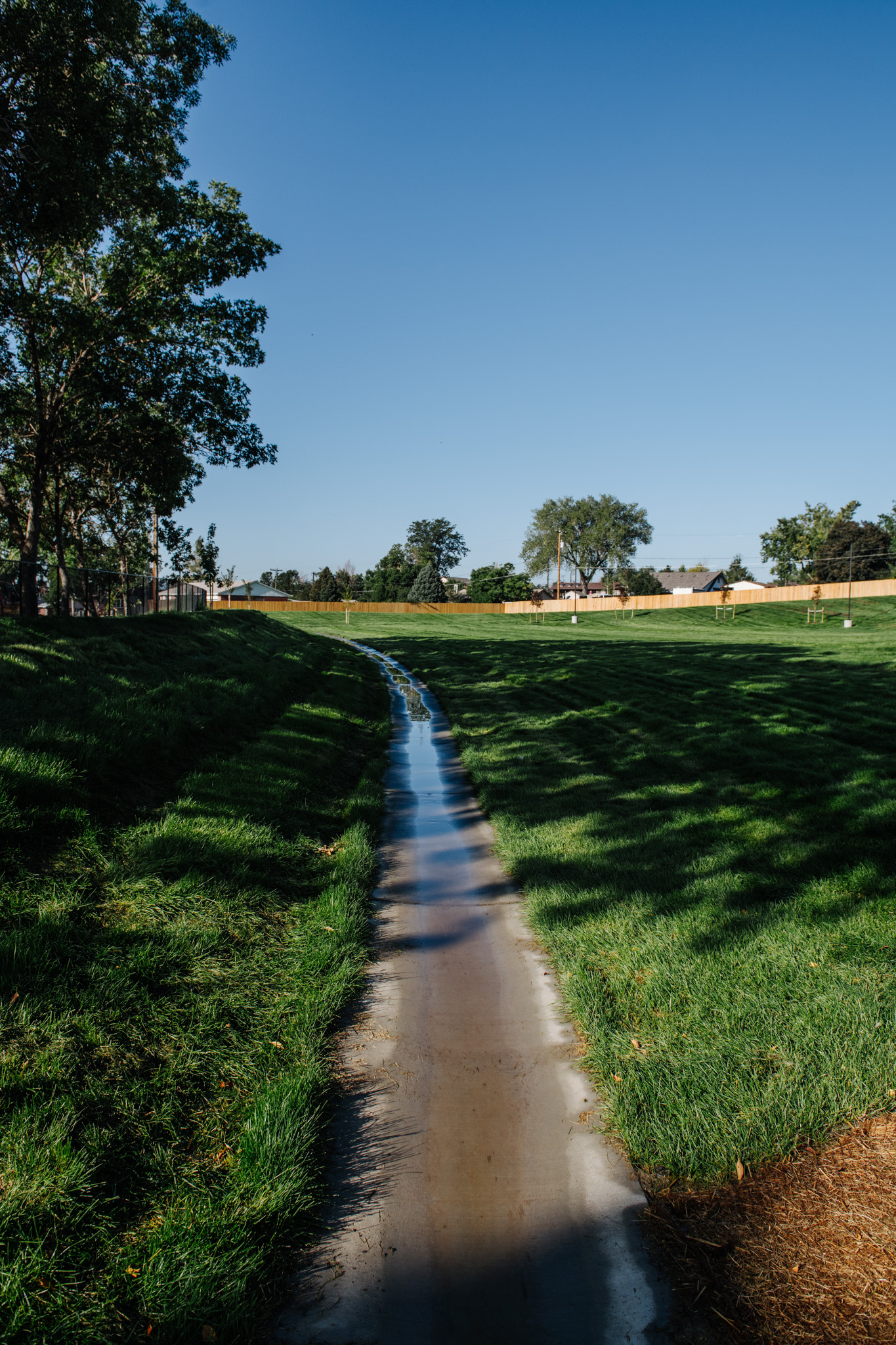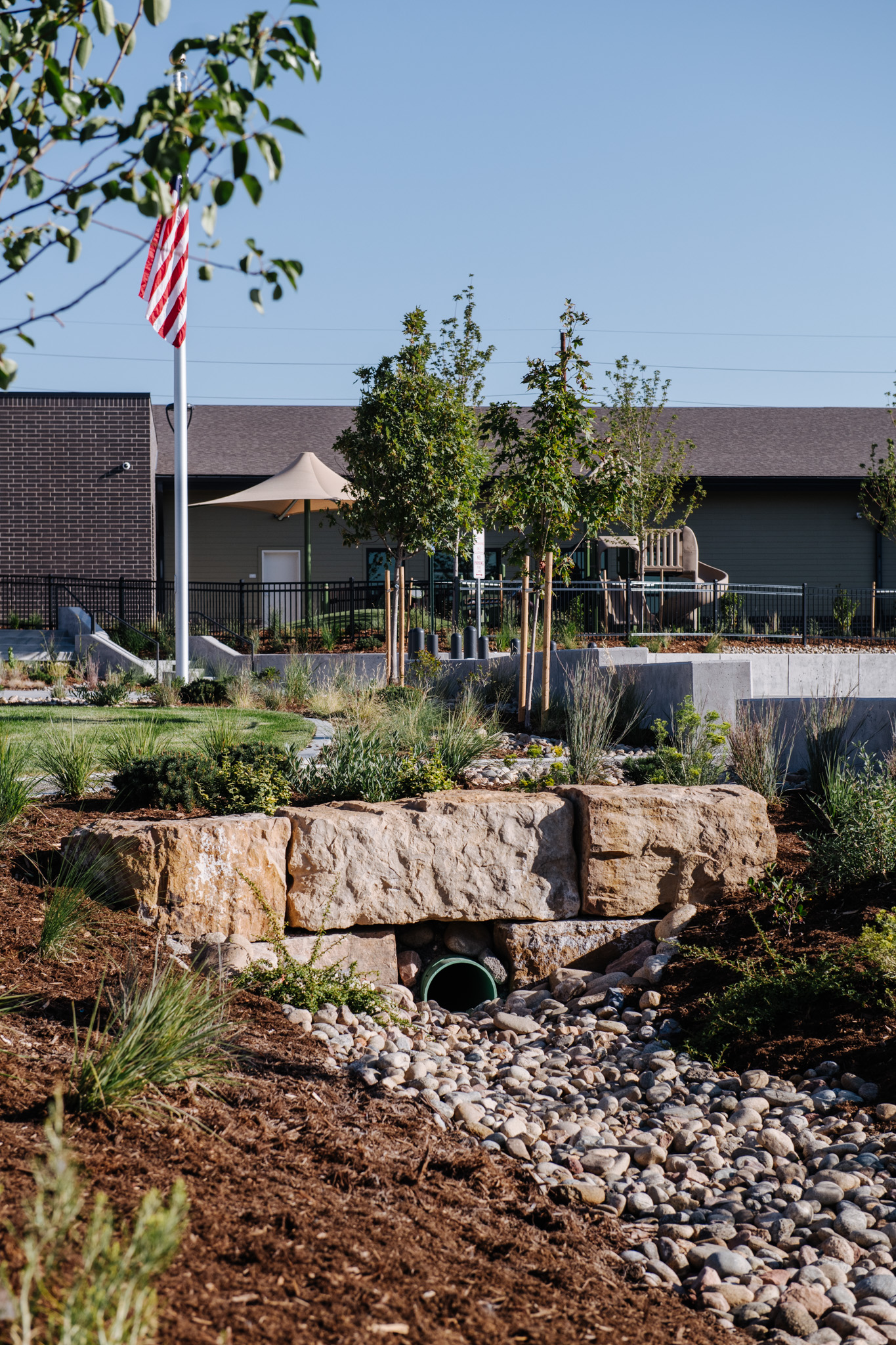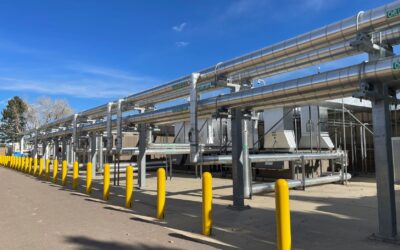No matter where you are developing in Colorado, odds are that some form of storm water management will be encountered. Often, the keywords “water quality” and “detention” get thrown around. In this post, we’ll describe the differences between water quality and detention and provide clarity for choosing a stormwater management system that best fits your project.
Per the National Pollution Discharge Elimination System (NPDES),water quality treatment is required with any development that disturbs over one acre. The NPDES is a permit program created by the Clean Water Act amendments of 1987 that addresses water pollution, but actual issuance of permits is handled at the state level. When developing a site, you will likely run across two types of stormwater quality permits – discharges due to construction activities, and permanent discharges from a developed site into a municipal separate storm sewer system (MS4). In this blog, we will discuss the latter, which is the regulation requiring permanent water quality and detention ponds. Colorado jurisdictions operating an MS4 typically have this permit in place, and require a developer to implement water quality facilities in order to comply with their permit. Although the state threshold is one-acre of disturbance, many jurisdictions in Colorado require water quality at lower thresholds.
When rainfall is collected via sheet flow, curb and gutter, or nearly any other conveyance method, it can pick up sediment, dirt, oils, and other contaminants. Instead of discharging these contaminants into natural waterways, preventive designs are implemented to ensure the water leaving the site is clean. The volume required to be treated is less than the 2-year storm and is known as the Water Quality Capture Volume (WQCV). The water can be treated with many different techniques which include Extended Detention Basins, underground proprietary filters, rain gardens, and sand filters. These facilities are referred to as Permanent Best Management Practices (BMPs).

In addition to water quality measures, stormwater detention is often required to be implemented on a site to reduce peak discharge during large events. Detention and controlled release is not required by the NPDES, but it is typically required by local jurisdictions to minimize flooding during large storm events. Different municipalities have different “trigger levels” that can require the implementation of detention. These triggers vary but are often categorized by site area, total additional imperviousness, or even a percentage increase in imperviousness.
Often, when developing a site, the overall imperviousness will increase. Inevitably, this will increase the speed/flowrate that runoff will leave the project site. To conceptualize this, compare a paved parking lot with a vegetated field. In a storm with equal intensity, rainfall will discharge directly off the paved lot with a much higher flow rate. In the vegetated field, runoff will be slowed by grasses and some will infiltrate into the ground, resulting in a much smaller flow rate.
So which water quality system is best for your site? This is always a multidimensional question that requires many factors to correctly analyze. In general, municipalities like to see all of their water quality facilities at ground level. This simplifies maintenance and ensures that the system does not get neglected. These at-grade facilities include rain gardens, extended detention basins, and sand filters. If space is limited, underground water quality can sometimes be implemented depending on the jurisdiction.
So which detention system is best for your site? The preferred facilities are normally at-grade, but it is common to construct detention facilities underground in the form of vaults, pipes or proprietary devices. If a discharge location is not available (such as a storm sewer), infiltration ponds may be used depending on soil types. Information linked to this article from Mile High Flood District can assist in determining the best option for your site. The attached “Aesthetically Enhanced Detention and Water Quality” guidebook from Denver will help incorporate these features into the natural landscape.
Whether it be a 2-year storm, or a 100-year storm, it is important to protect our existing infrastructure and more importantly, our natural water ways. With our experience at Brightlighter, we can simplify seemingly complicated stormwater issues and ensure that you make the correct decision. Not only will this improve your final product, but it will also decrease flooding and improve the environmental health of surrounding water ways that millions of people depend on.




